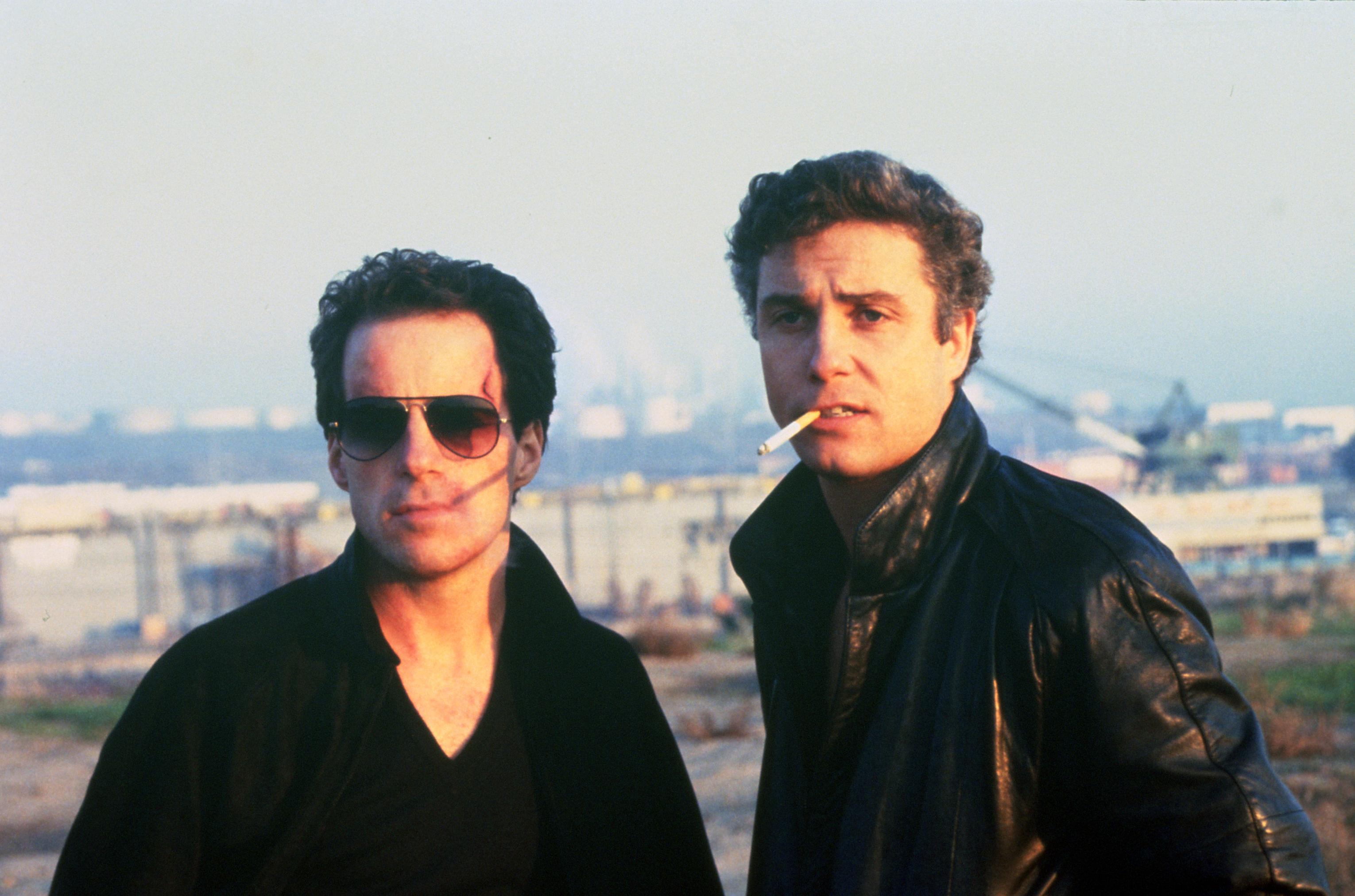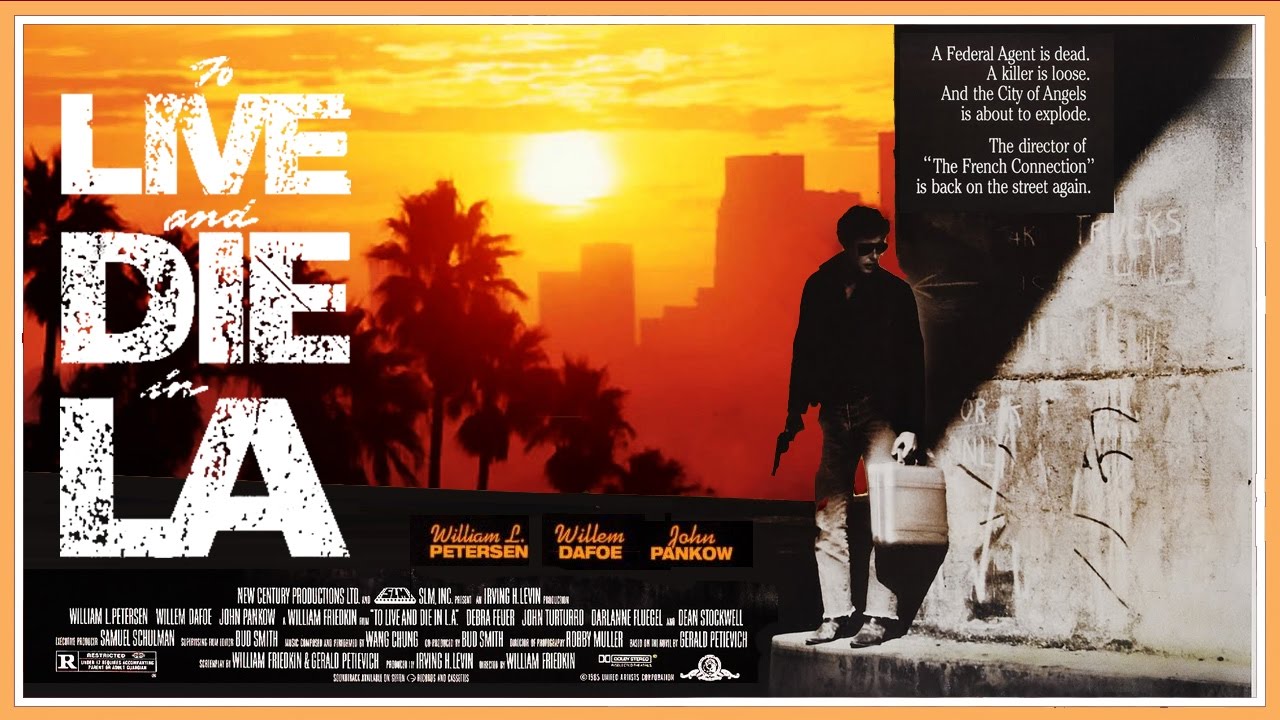William Friedkin’s To Live and Die in L.A

“To Live and Die in L.A.”: William Friedkin’s Overlooked Neo-Noir Masterpiece
Among the films that defined the crime genre of the 1980s, William Friedkin’s “To Live and Die in L.A.” (1985) stands out as a hidden gem—intense, captivating, yet underappreciated upon its initial release. Blending explosive performances, iconic action sequences, and a Los Angeles portrayed as a symbol of corruption, the film transcends a mere crime chase to become a profound exploration of the fragile boundaries of morality.

A Tale of Obsession and Destruction
Released on November 1, 1985, “To Live and Die in L.A.” immerses viewers in the journey of Richard Chance (William Petersen), a reckless U.S. Secret Service agent driven by grief and a thirst for vengeance after the murder of his partner. His target is Rick Masters (Willem Dafoe), a masterful counterfeiter who is as cold-blooded as he is artistic. As Chance pursues Masters at all costs, he drags his reluctant new partner, John Vukovich (John Pankow), into a spiral of lawlessness where the line between justice and crime blurs.

Unlike conventional crime films, “To Live and Die in L.A.” offers no clear heroes or villains. Chance, with his arrogance and daring, is willing to sacrifice everything—law, ethics, even his life—to achieve his goal. Masters, meanwhile, is more than a criminal; he’s an artist consumed by his craft, both terrifying and magnetic. The film’s shocking conclusion—a gut punch to audience expectations—cements its neo-noir ethos: there are no victories, only survival and its steep price.
The Signature Style of Master Filmmaker William Friedkin
William Friedkin, renowned for The French Connection (1971) and The Exorcist (1973), infuses the film with his trademark dynamism, tension, and unrelenting vision. The standout moment is the car chase on a Los Angeles freeway, filmed over six weeks with vehicles racing against real traffic—no effects, no shortcuts. Widely regarded as one of the greatest action sequences in cinematic history, it arguably surpasses even the iconic chase in The French Connection.

The visual portrayal of Los Angeles, captured by cinematographer Robby Müller, becomes a character in itself. Bathed in vibrant neon lights and harsh daylight, the city emerges as both alluring and perilous—a perfect backdrop for a tale of corruption and decay. The pulsating electronic score by Wang Chung, featuring the titular theme song, not only roots the film in the 1980s but also amplifies its gripping atmosphere.
Performances: A Clash of Titans
William Petersen delivers a raw, electrifying performance as Chance, embodying a character as admirable for his determination as he is flawed for his self-destructiveness. This role propelled Petersen into the Hollywood spotlight before his later fame with CSI. Opposite him, Willem Dafoe’s Rick Masters exudes a chilling calm—a villain with depth and charisma, marking a pivotal moment in Dafoe’s career.
Their interplay is not just a battle between cop and criminal but a collision of two men consumed by their personal codes. John Pankow’s Vukovich serves as the moral compass, gradually warped by the chaos, providing balance to the narrative.

Legacy and Belated Recognition
Upon release, “To Live and Die in L.A.” received mixed reviews, with some critics decrying its violence and the amorality of its characters. Over time, however, it has been reevaluated and hailed as a neo-noir masterpiece. On Rotten Tomatoes, it holds an 88% approval rating from critics (as of 2025), and it frequently appears on lists of the decade’s standout films.
Though its box office haul was modest—$17.3 million against a $6 million budget—the film’s cultural impact endures. Its visual style influenced works like Miami Vice, while its bold storytelling inspired later crime epics such as Michael Mann’s Heat (1995), cementing its timeless relevance.

A Question About 2025
While no official word exists of a new “To Live and Die in L.A.” for 2025, the idea of a related project has surfaced before. In 2015, Friedkin announced plans for a TV series adaptation with WGN America, but the project stalled following his death in 2023. As of now, no remake or sequel has been confirmed, leaving the 1985 film as a singular achievement in Friedkin’s oeuvre.

Conclusion
“To Live and Die in L.A.” is more than a crime film—it’s a meditation on obsession, uncrossable lines, and a Los Angeles where survival comes at a steep cost. With its seamless blend of visuals, music, and performances, it ranks among William Friedkin’s finest works, despite its initial undervaluation. If you haven’t seen it, take the time to discover this overlooked gem of 1980s cinema—an unmissable experience.
TRAILER MOVIE📺👉:





